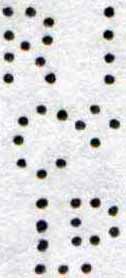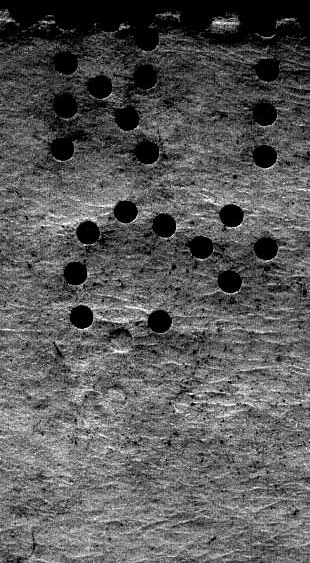|
Private Revenue Perfins of Western Australia An Elsmore Coath production The authors would welcome your comments additions or input into this work C D F G H I K L M N O P R V W Other R -------------------------------------------------------- RI/Co/LD.a
User: Royal Insurance Co Ltd Address: 133 St Georges Terrace, Perth, WA Revenue Use: 1911-30 issue 1d, 3d, 6d, 1/-, 2/-, 2/6d, £5. Rarity Scale: 1911-30 issue 1d R2, 3d R3, 6d R3, 1/- R3 2/- R3, 2/6d R3, £5 R4. Background: The Royal Insurance Company was established in Liverpool in May 1845 and expanded quickly into overseas markets establishing offices in Australia, Canada, Singapore, and South America by the 1850’s and later the US. By the 1860’s Royal had 10 offices in Australia and it continued to grow through mergers at home and abroad. In 1919 it acquired the rival Liverpool & London and Globe Insurance Company in what was, at the time the largest merger in British Insurance history. This merger was a trend that was to continue across the industry through the 20th century culminating in Royals merger with Sun Alliance, itself a product of mergers between the Sun, Alliance, London and later Phoenix Insurance companies. The resulting company Royal Sun Alliance was formed in 1996 and was later (2008) rebadged as RSA Insurance Group and is headquartered in London. As part of these changes the companies activities in Australia and New Zealand are restructured under the Promina Brand and the General Insurance arm is renamed Vero. Device: In 1912 Royal Insurance purchased a number of near identical devices for their offices across Australia including Melbourne, Sydney, Newcastle, Brisbane, Adelaide and Perth (this device). From the evidence of multiple strikes it is clear that these were a series of single head devices. There may have been more than one device for country offices in Queensland or larger offices such as Melbourne and Sydney. Sydney is known to have used a circa 1912 type RI/CO/LD device between 1912-1967, as well as an RIC device between 1932-1967 and a thicker pin variety of the RI/CO/LD in 1929-1930, so there is evidence to support the theory of multiple devices in the same location. Therefore it is difficult to confirm how many of these circa 1912 devices there were as the patterns from the various devices are so close. Some variation between the patterns from these remote devices is noticeable but is so subtle that it cannot be catalogued. It is worth considering the possibility that the pattern was a result of a single device, most likely located in the Melbourne office, with punctured stamps then distributed to the remote offices. However this is difficult to support given the usage on postage and revenue stamps of various States and the fact that the Company subsequently purchased a similar (RI/CO/LD) pattern device for the Hobart office in about 1930, as well as providing a series of RI/CO devices to the Launceston office between 1920 and 1969 and an RIC device to the Sydney office from 1932-1967. If you had a workable process from a central device then these other devices would not be required. This RI/CO/LD device of Perth is found on postage and revenue stamps of Western Australia as well as postage stamps of Australia for the period from 1913. Usage on postage stamps for this pattern is reported until as late as 1967. However due to the similarities in the patterns produced by these circa 1912 devices it is difficult to accurately determine when a specific device in a particular location stopped being used. Any closing date would need to be supported by evidence based on issues that the pattern is found on and postmark evidence. In previous studies of this pattern there have been a couple of small errors as follows: Report of an RI/CO pattern with an RI/CO that is the same as the circa 1912 RI/CO/LD pattern:
This is most likely based on reports of partial strikes of the full RI/CO/LD pattern. We have seen many examples of these patterns and all show evidence of the top of the LD generally in blind pins or in some instances just the outline of part of the pin visible under a microscope. *These partial strikes are not common but they can be found on stamps of most capital cities and over nearly the entire usage period of the circa 1912 RI/CO/LD devices. Given this broad usage and distribution and the fact that they show evidence of the LD there are most likely an operator error where insufficient pressure is applied across the entire height of the die head.
*Partial Strike [above] showing 2 blind pins for the top of LD. Report of 3 types of the Circa 1912 RI/CO/LD pattern: The 1912 RI/CO/LD devices produce patterns which are near as possible to identical so defining types is not possible. In previous studies the term “type” has been used to describe a number of different forms of variations within a pattern such as, similar pattern images that may be the result of alterations to the die head, a similar die of a multi head device and the variation present in most service punctures. Given that these RI/CO/LD devices were single head devices which produced essentially identical strikes over the life of the devices, the use of the term “type” is not appropriate. The noting of these “types” may have been an attempt to describe the somewhat similar patterns such as the Queensland pattern RI/CO/LD.b, (see QLD section) or the thicker pinned NSW pattern RI/CO/LD.b (1929-30) of the Sydney office (see NSW listing) or indeed the Tasmanian RI/CO/LD.a (1930-63) of the Hobart office. (see Tasmanian listing). Related Patterns: NSW: RIC.a RI/CO/LD.a
RI/CO/LD.b QLD: RI/CO/LD.a
RI/CO/LD.b TAS: RI/CO.a
RI/CO.b RI/CO/LD.a -------------------------------------------------------- C D F G H I K L M N O P R V W Other © copyright 2011 |


 *
*